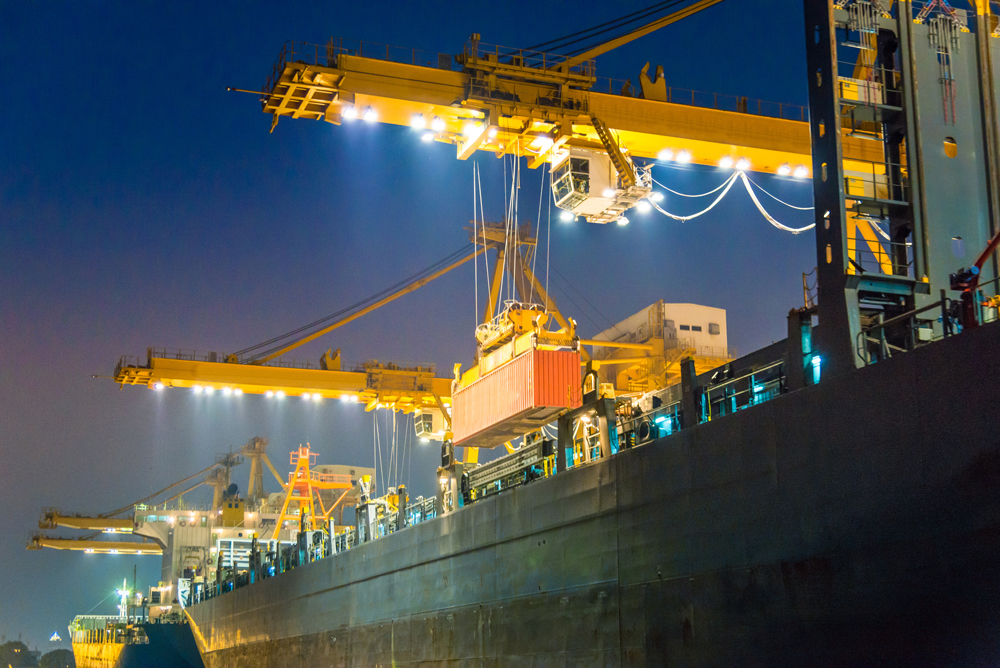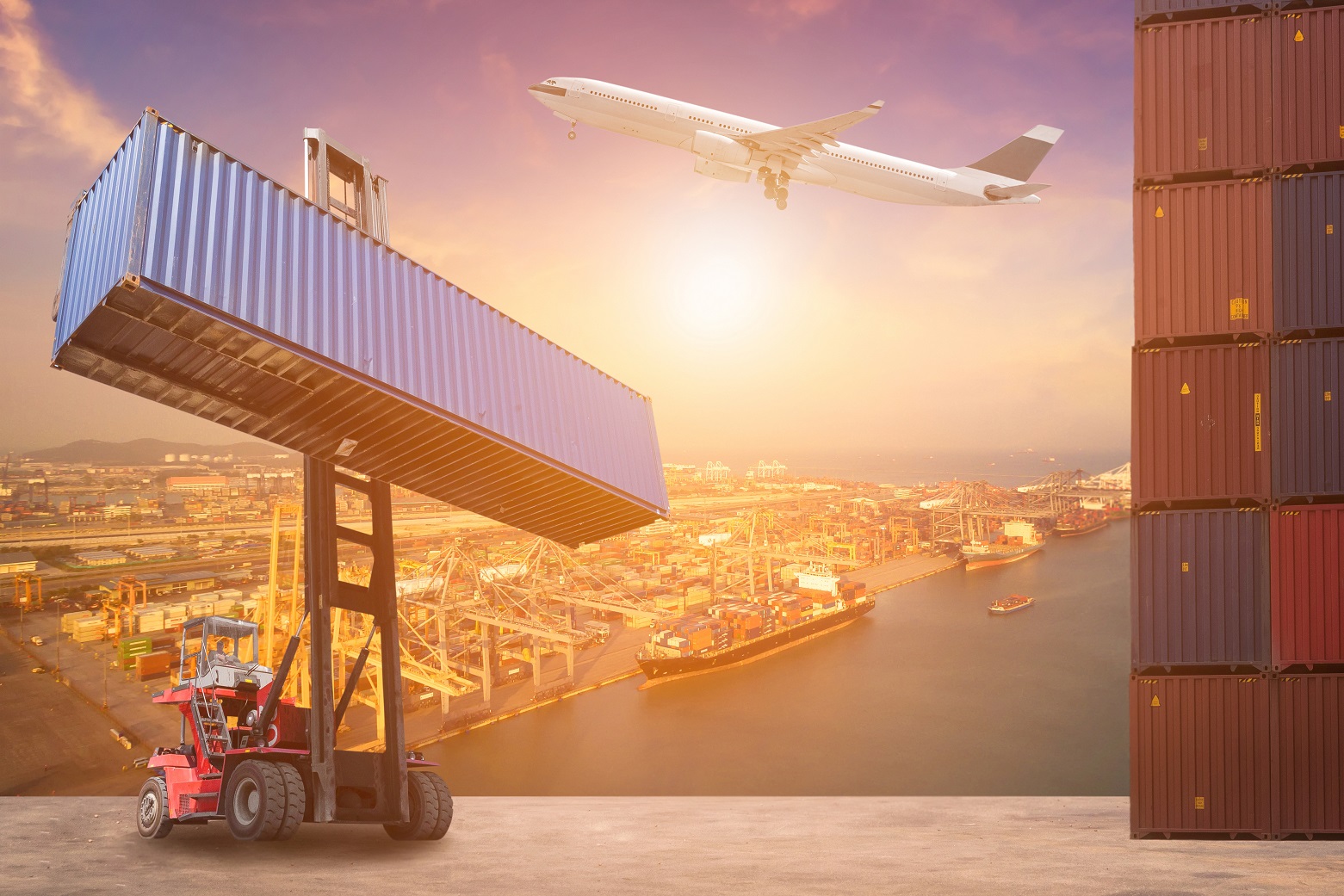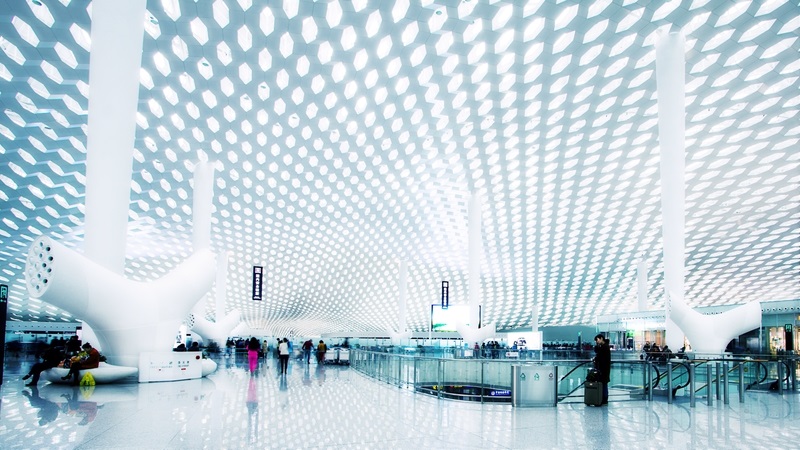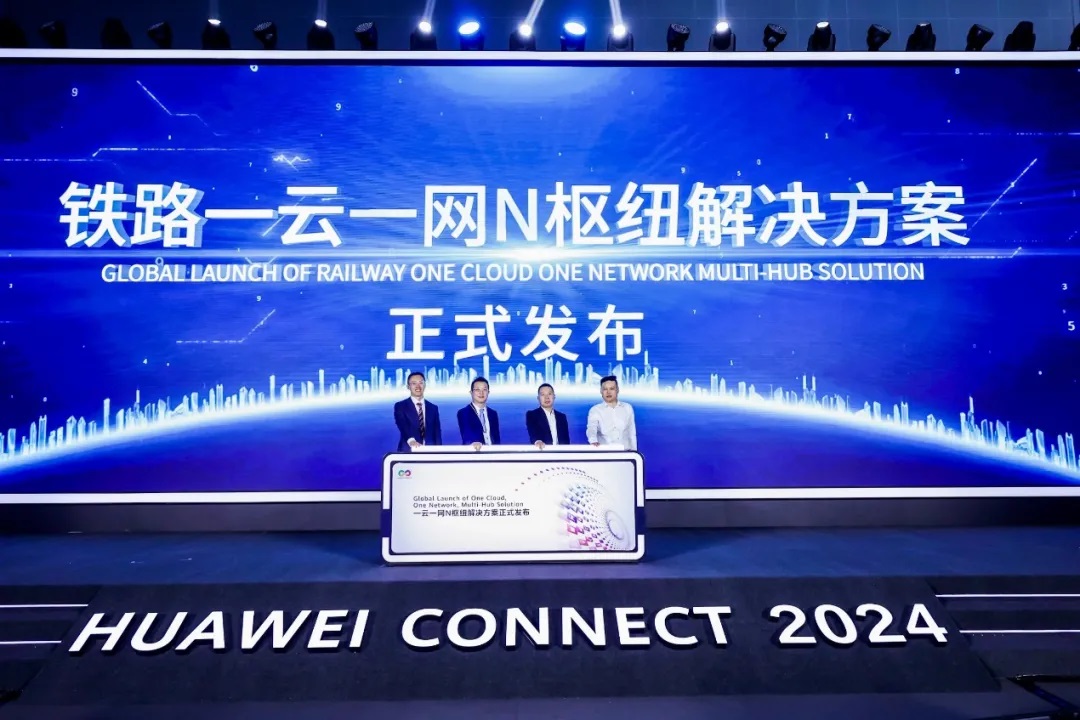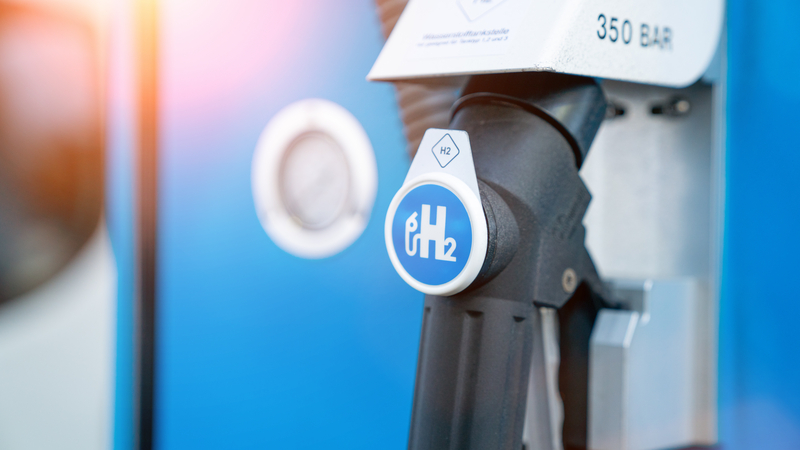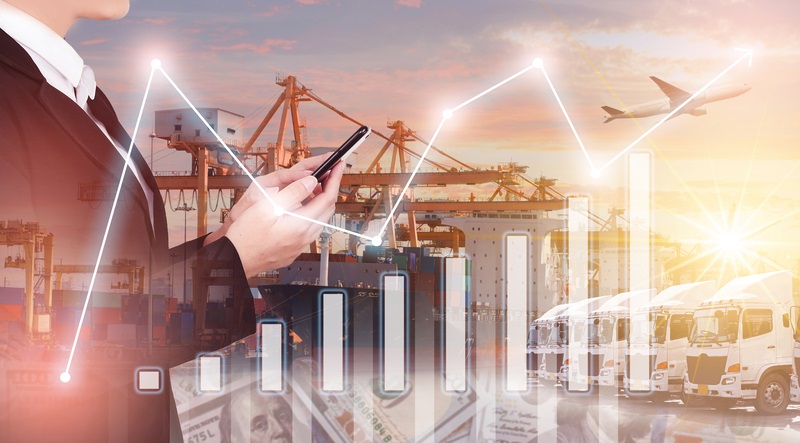
Developments in the Information and communications technology (ICT) are poised to have a transformative effect in the ports sector. Artificial intelligence (AI) and 5G telephony will in the next few years progress rapidly from being novelties to essentials.
These developments are necessary because the maritime sector faces a combination of pressures, unique in its centuries-old history. Digitalisation is going to be the key to success and even survival.
Digital solutions
Around 90% of the world’s goods are transported by sea, with over 70% moved as containerised cargo. Nevertheless, ports still face significant challenges.
Tight margins, over-capacity and phenomena such as container imbalance caused by unbalanced import/export demands have resulted in many vessels being mothballed or scrapped even as ever-larger ones, intended to improve efficiencies and increase yields, enter service. These technical and logistical challenges test the physical limits of marine architecture, ports and waterways, but cannot of themselves deliver the necessary improvements in efficiency and profitability.
At the same time, the shipping industry is contending with a growing legislative burden. Environmental concerns — and new rules on desulphurisation, grey/black water disposal, ballast water management and so on — coincide with more stringent requirements in terms of crew and staff training/welfare as well as many other more general regulatory developments. This all nips at viability.
Ports need to focus on flows, improving ship movements and the intermodal interconnections with the hinterland’s rail and road networks that move goods inland. All of this has to happen within complex ecosystems involving highly temporal processes which are affected by even the smallest of disruptions.
The technological solutions required are to be universal and non-proprietary. The involvement of key partners such as Huawei is going to be crucial to ensure the economies of scale and speed of implementation possible using commonly-agreed standards and a vast experience in the Digital Transformation of industries.
The wider concepts of Digital Transformation are already well on the way to adoption. Manufacturing is embracing Industry 4.0, with its emphasis on machine-to-machine (M2M) communication and the Internet of Things (IoT) to enable far greater levels of flexibility and the ability to adapt to change in real time.
In a maritime context this translates into Port 4.0, and application of harmonised solutions and principles. The features of 5G will help maritime stakeholders achieve the changes they need to without having to resort to bespoke solutions. An example is the use of 5G, with its near-zero latency, to support the safe movement of autonomous vehicles (AVs).
As in many sectors, automation is going to be the key to guaranteeing viability but this has to happen in a safe, consistent, error-free manner.
The rise of digitalisation
More than 170 countries now have a digital strategy, and many have specific strategies for AI. These account for more than 1% of collective GDP and around 20% of total ICT investment.
Ports, says Tiago Pinto, transportation and business development with Huawei Technologies, will benefit in numerous ways — in particular from integration and simplification of the entire supply process. This brings together port operations, shipping companies, customs and excise, warehousing enterprises, logistics companies, and forwarder and shipping agencies.
An overarching Intelligent Operations Centre using Big Data principles will provide panoramic visualisation of activities in, around and through the port. Logistics campuses will utilise the IoT to achieve overall better cargo tracking, which will involve intelligent tally (vessel loading/unloading) and intelligent gate functions. The entire cargo function will be remotely controlled and highly automated — ground vehicles will be autonomous and video surveillance largely or wholly independent of human intervention. Drones and robots will fulfil many roles currently carried out by humans.
The efficiency gains are impressive. Intelligent gate, for example, uses automatic number plate recognition and container tracking to provide real-time interaction with gate management. The process has been reduced down from three to five minutes to 10-20 seconds.
This is not just science fiction: the Port of Shanghai, the Yangshan Terminal 4 Automatic Port, which handles 43.5m TEU annually, has already achieved a 30% increase in efficiency while using 85% fewer staff than would historically have been the case.

In Europe, an increasing number of ports are also adopting 5G and AI as part of their digital transformation course.
At the Port of Algeciras, Huawei was involved in a pilot project to modernise and optimise the management and security systems. The use of augmented reality and 5G, with video streaming in real-time and advanced assistance, enables faster response times by the port’s agents.
The Port of Barcelona also relied upon Huawei’s 5G and AI potential to implement a solution that will offer information on vessel location and complement the data provided by the identification systems currently used by the port’s control tower.
Within the EU, says Dr. Georgia Ayfantopoulou, from the Hellenic Institute of Transport (ΗΙΤ) of CERTH, Greece’s centre for research and technology, a major aim is to integrate maritime better with other transportation modes. At the same time, there are targets for decarbonising ports and reducing total gas emissions by 90% by 2050. A problem is the lack of high-quality infrastructure at many ports. ICT is seen as a means of improving overall performance and increasing ports’ socio-economic integration. Various initiatives are addressing these goals.
CERTH and Huawei have collaborated in the Green Port project proposal that was submitted in the EU Green Deal call. This looks to capitalise on the experiences of ‘lighthouse’ ports which meet the ‘Ports of the Future’ criteria defined by a 13-country Green Ports consortium.
A Green Port is sustainable, smart, multimodal and interconnected. Clean energy is produced, distributed, supplied and used for transport and other purposes. Smart, connected, automated vehicles are integrated within the ports and in logistics/intermodal operations. System-wide door-to-door mobility for passengers and freight is assured; and there are balanced links with cities, the urban environment, biodiversity and development in accordance with circular economy principles.
The Pixel (Port IoT for Environmental Leverage) project, meanwhile, has created a heterogenous data platform for small and medium ports. This uses the IoT and predictive analytics (Big Data) to optimise environmental performance and smooth logistics flows, together with dashboards to maximise awareness in real time.
The Pixel platform and services have been implemented in the northern Greek port of Thessaloniki with the aim of collecting data and proving impact across all the supply chain workflows. Full integration with the port community’s system was achieved as well as real-time information and data collection from the field of port operations. The real-time provision of information and the monitoring of key performance indicators via the dashboard is very much appreciated by the management of the port of Thessaloniki, as well as of the other ports participating in the project.
Getting started
Becoming smarter is being embraced at sea and in port. Both the International Maritime Organisation (IMO) and International Organisation for Standardisation (ISO) have given sustained effort to the topic of smart ships. ISO has set up a standardisation roadmap and the major classification societies (the organisations responsible for defining and maintaining technical standards for ships’ construction and operation) have issued rules and guidelines.
Smart ships have a large range of sensors and connectivity; are able to perceive and obtain information on their own condition, that of the ocean around them, ports and other stakeholders; make use of ICT, utilising automatic control and Big Data processing/analysis; and achieve intelligent operation in terms of ship navigation, management, maintenance and cargo transportation.
A challenge is going to be managing the huge amounts of data which exist in the maritime sector. The China Classification Society advocates a blockchain approach rather than monolithic data systems.
Specific areas, it says, that could benefit significantly from 5G and AI include ship survey. This includes the use of drones and wearable augmented reality equipment to facilitate real-time inspections, image-recognition of hull structures and defects, and use of panoramic virtual reality for remote survey training. Challenges include cybersecurity: risk needs to be assessed, and testing and verification carried out.
Implementation of a digitalisation strategy has to be realistic if it is to succeed, according to Sascha Treppte, head of business development and strategy at DuisPort, Europe’s largest inland port and an important logistics and innovation hub.
Entrenched thinking has to be challenged and digitalisation needs to be taken seriously, not regarded as an additional task to normal daily business.
Nevertheless, in a low-margin sector there is little spare money for effecting change nor room for error; solutions have to work from the start and benefit all stakeholders. Common standards are important.
Key lessons have been: decide a strategy and push it through, and involve the finance people as early as possible. ‘Roadblocks’ are to be expected, accepted and pushed out of the way. That involves a focus on problem-solving, and thinking big but starting small. Engaging with willing partners is a must, as change and the first, tangible results have to happen quickly.
Looking forward
To compete, especially in the face of uncertain demand, a port has to diversify, differentiate itself, and focus on the customer, says Carles Rúa Costa, chief innovation officer at the Port of Barcelona.
Barcelona’s Smart Port Model takes as its basis Smart City models, linking the port to the communities behind it. This involves many stakeholders: there are 500 companies engaged in work retailing to the Port of Barcelona, for instance, and it is an important innovation facilitator — Pier 01, part of Barcelona Tech City, is one of the top five innovation hubs in Europe. The port is therefore part of a chain, and critical infrastructure; any new technology which is introduced has to be proven and must work.
Principle elements of a smart port include the use of drones, automatic gates, civil security and resilience, interfaces between ports and cities, and cargo track-and-trace. The technologies which support these already exist, while others are still emerging, Rúa Costa says.
AI-based image recognition, for instance, can be used successfully to track cargo. This includes building ‘pictures’ of whole trains and knowing where in them individual cargoes are located. Waste management monitoring is another successful application. Virtual reality is also proving useful and 3D images are a good means of displaying all of the relevant information.
Blockchain, he contends, will be very powerful but is still two or three years from being truly useful, and any digitalisation strategy has to concentrate not just on increasing sensors and communications but on getting the right solutions in the right places.
Rúa Costa also highlights energy transformation and the circular economy/greater materials minimisation and re-use as a concurrent trend with digitalisation. In many respects they are synonymous, with better connectivity raising environmental performance.
This is exemplified by the Port of Palma de Mallorca, where Dolores Ordóñez, technical director of environmental consultant AnySolutions, explains that a whole series of initiatives are under way. These include: the Green Hyslands 2020 project, which is supplying green hydrogen; Clean Ports, which is promoting use of LNG and reducing emissions from fossil fuels; and implementation of photovoltaics across terminal buildings.
A unitary dashboard links with other, existing platforms to enable an across-the-board view of efficiencies. AVs operate in the port area and drones are used to clean the water surface. Multimodality is encouraged as close interaction with the city authorities helps to improve tourist flows.
Smart working
Time and again, these examples of smart(er) ports echo the principles of smart(er) communities generally. They rely on high numbers of stakeholders cooperating, and the breaking down of institutional barriers. They need increased levels of intelligence, based on data which is gathered, processed and disseminated or acted upon in real or near-real time.
5G provides the data capacities and speeds which allow the IoT and AI to happen, as well as additional capabilities which were previously impossible with cellular or else unique to other technologies, such as the near-zero latency necessary for AVs.
Most of all, 5G provides the overarching means to make things happen. What also needs to happen, on a continuing basis, is active participation from across the board in standards definition and refinement; 5G might not be a proprietary technology but there is common interest in having a single solution with universal application.
Huawei is currently hosting the Industrial Digital Transformation Conference 2021 online to explore the power of the resilient and innovative digital world from three perspectives: business, technology and ecosystems.
Featuring a series of activities – from keynote speeches to forums and roundtables – the Industrial Digital Transformation Conference 2021 is an open and inclusive platform that serves as the backdrop for in-depth, ambitious dialogue.
For more information, please click here.
Content produced in association with Huawei



